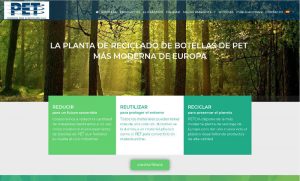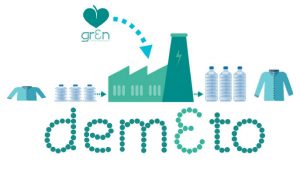REDUCIR
para un futuro sostenible
Colaboramos a reducir la cantidad de materiales destinados a un uso único mediante el procesamiento de botellas de PET que favorece su vuelta al ciclo industrial.
REUTILIZAR
para proteger el entorno
Todos los materiales pueden tener más de una vida útil. Nosotros se la damos a un material plástico como el PET para convertirlo en materia prima.
RECICLAR
para preservar el planeta
PETCIA dispone de la última tecnología de reciclaje para dar una nueva vida al plástico, desarrollando productos de alta calidad.
ÚLTIMAS NOTICIAS

PET COMPAÑÍA obtiene la certificación EUCERTPLAST (European Certification of Plastics Recycling)
Leer más » 18/05/2020 No hay comentarios



